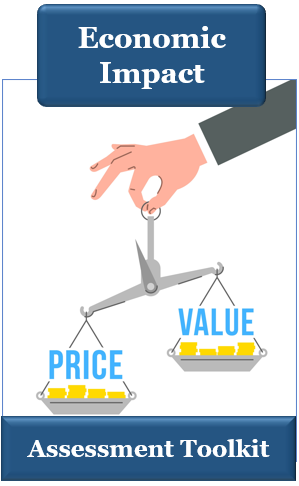Guide to Effectively Measuring Social Impact
Summary – Social Impact Measurement
Social impact refers to an organization’s influence, positive or negative, on individuals, communities, and society. This includes domains like health, education, economics, social justice, and the environment. Impact can range from individuals to global populations, driven by diverse entities like for-profit, non-profit, or government organizations.
Measuring social impact is crucial for understanding and optimizing an organization’s societal contributions.
This involves quantifying outcomes from initiatives and programs, considering both intended and unintended effects. It aids accountability, informed decision-making, transparency, and effective resource allocation, while also enhancing stakeholder engagement and organizational legitimacy.
Social impact indicators are pivotal for evaluating the success of efforts aimed at societal betterment. These indicators span areas like economic development, education, health, and environmental sustainability.
What You Need to Know About Social Impact Measurement Tools
Various methods, such as the Theory of Change, logic models, outcome harvesting, Social Return on Investment (SROI), surveys, questionnaires, interviews, participatory approaches, and case studies, help measure social impact.
Effective social impact reporting communicates outcomes transparently, reinforcing ethical practices and responsible communication. OCM Solution’s Social Impact Assessment Tool streamlines the assessment with a comprehensive template and reporting.
If you’re excited to learn about measuring social impact in more detail, head down to our Table of Contents.
See Also: Social Impact Assessment (SIA) Guide with Measurement Samples
|
DETAILED SECTION |
|
If you’re ready to delve deeper into how to measure social impact proceed to our detailed sections below that provide a detailed overview |
Table of Contents: Guide to Effectively Measuring Social Impact
Keep on scrolling down this page to read each section or click any link below to go directly to that section.
- Introduction to Social Impact Measurement
- What is Social Impact Measurement?
- Why You Should Be Measuring Social Impact
- Social Impact Metrics You Need to Know About
- How to Measure Social Impact
- Best Social Impact Assessment Tool
- Social Impact Reporting | What Should Social Impact Report Template Contain?
- Conclusion | Social Impact Measurement Tools
- FAQ | Social Impact Tools Summary
What is Social Impact? | Introduction to Social Impact Measurement
Social impact refers to the positive or negative effects that an organization’s actions have on the well-being of individuals, communities, and the broader society.
It encompasses a wide range of outcomes, including improvements in:
- health,
- education,
- economic development,
- social justice, and
- environmental sustainability.
Social impact can occur at different levels, from the individual beneficiary to entire communities or even global populations.
Organizations, whether for-profit, non-profit, or government entities, can have a social impact through their programs, initiatives, investments, or operations.
Now that we know what social impact is, let’s move to social impact measurement.
Do you need more information about social impact assessment template in general? Please reach out and let us know.
What is Social Impact Measurement?
Social impact measurement is a process and framework for measuring and attributing positive social change to an organization’s direct actions.
Social impact measurement is an increasingly important concept for organizations, both nonprofit and for-profit, that seek to understand and optimize the social and environmental effects of their activities.
This concept has become especially important in the context of growing societal awareness and the need for responsible business practices.
Organizations engaging in social impact measurement often do so with various objectives in mind.
They may aim to:
- understand the effectiveness of their programs,
- attract funding or investments,
- report their impact to stakeholders, or
- simply ensure that their actions align with their mission and values.
At its core, social impact measurement is about identifying and quantifying the change that occurs as a result of an organization’s actions.
It involves assessing both intended and unintended outcomes and understanding the broader implications of these outcomes on different stakeholders, such as beneficiaries, communities, and the environment.
Related: The Best Guide for Conducting an Effective Environmental and Social Impact Assessment
Why You Should Be Measuring Social Impact
Social impact is a critical metric for organizations focused on generating positive societal change.
Whether they are nonprofits, businesses with corporate social responsibility goals, or government programs, understanding the tangible effects of their efforts is paramount.
As the significance of socially responsible initiatives grows, the reasons for measuring social impact become even more compelling.
Here are some pivotal reasons why measuring social impact is essential:
Accountability
Measuring social impact allows organizations to demonstrate to stakeholders, including donors, investors, regulators, and beneficiaries, how resources are utilized and the outcomes achieved.
It establishes a sense of responsibility, ensuring that the organization is accountable for its actions, outcomes, and impact on society.
This is essential in fostering trust among stakeholders and reinforcing an organization’s commitment to achieving its mission.
Informed Decision-making
Measuring social impact enables organizations to assess the effectiveness of their programs and initiatives and make data-driven decisions for continuous improvement.
By quantifying the impact of their activities, organizations can identify which interventions are most effective in achieving their goals and which need to be adjusted or discontinued.
This evidence-based approach helps organizations refine their strategies, optimize their operations, and maximize their social impact.
Transparency
Providing a clear and transparent view of an organization’s operations and impact helps build trust among stakeholders.
By disclosing their social impact data, organizations can demonstrate their commitment to their mission and values and showcase the positive impact they have on the communities they serve.

Why is Social Impact Measurement Important?
Resource Allocation
Measuring social impact guides organizations in efficiently allocating resources to the most impactful initiatives.
By analyzing social impact metrics, organizations can determine which programs or projects have the greatest potential to achieve their desired outcomes.
This allows them to prioritize initiatives with the highest social returns on investment (SROI) and direct resources towards efforts that are most likely to create lasting, positive change.
In turn, this ensures that the organization is making the best use of its resources and maximizing its impact on the communities it serves.
Stakeholder Engagement
Measuring social impact also facilitates stakeholder engagement, as it provides an opportunity for organizations to communicate their impact to various stakeholders.
By sharing their success stories and achievements, organizations can inspire others to support their cause, volunteer their time, or contribute resources.
This can lead to increased support and collaboration, helping the organization further its mission and achieve even greater social impact.
Legitimacy
Demonstrating measurable social impact can enhance an organization’s credibility and legitimacy.
Organizations that can showcase their positive impact are more likely to be seen as trustworthy, reputable, and deserving of support.
This can help them gain the backing of donors, investors, and other stakeholders who are looking to support initiatives that truly make a difference.
Social impact measurement is an essential practice for any organization that aims to create positive social change.
It provides valuable insights that can drive continuous improvement, foster trust and transparency, and ensure the efficient allocation of resources.
Ultimately, it helps organizations achieve their goals and maximize their impact on the communities they serve.
Next, let’s take a look at how social impact indicators tie into measuring social impact.
Popular Article: Best Culture Assessment Guide
Do you have any questions about social impact assessment reports? Please reach out and let us know. We’ll love to hear from you.
Social Impact Metrics You Need to Know About | Social Impact Indicators
Social impact indicators are essential tools for measuring the effectiveness of programs, initiatives, or interventions that aim to create positive societal change.
As organizations strive to understand and demonstrate their contributions to social progress, social impact metrics become increasingly important.
Measuring social impact indicators allows organizations to quantify and assess their influence on the communities or stakeholders they serve.
Social impact metrics can encompass various areas, including:
- economic development,
- health, education,
- environmental conservation, and
- more…
By selecting appropriate social impact indicators for each area, entering them into a social impact assessment template, and creating a meaningful social impact report, organizations can gain insights into the tangible effects of their efforts and identify areas that need improvement.
This practice of measuring social impact indicators enables organizations to make data-driven decisions and refine their strategies for greater impact.
When measuring social impact indicators, organizations should consider factors such as the:
- target population,
- geographic location,
- level of impact,
- is impact reversible or permanent,
- is impact positive or negative,
- public perception of the impact
- project duration, and
- the resources available.
This contextual information is crucial for selecting relevant metrics and interpreting the results in your social impact assessment reports.
Moreover, organizations should use both quantitative and qualitative social impact indicators to capture a comprehensive view of their impact.
Social Impact Tools & Metrics
Social impact measurement is not a one-time activity; it requires regular monitoring and assessment to track progress over time.
By consistently measuring social impact, organizations can demonstrate their commitment to achieving their mission and ensure the effectiveness of their initiatives.
To maximize the benefits of measuring social impact, organizations should adopt a systematic approach.
This involves:
- selecting appropriate social impact metrics,
- collecting data,
- analyzing the results of their social impact assessment reports, and
- using the insights from social impact assessment reports to inform future initiatives.
Organizations should also share their findings with stakeholders and use the social impact report to demonstrate the positive impact of their efforts.
As organizations continue to focus on creating positive social change, the practice of measuring social impact will remain essential for optimizing their impact.
But how to measure social impact? We’ll delve into that next.
Related: Environmental Impact Assessment (EIA) Guide | Everything You Need to Know
Are you looking for more information about social impact measurement tools? Get in touch and let us know!
How to Measure Social Impact? | Social Impact Measurement Methods
Understanding how to measure social impact is crucial for organizations aiming to create positive societal change.
Social impact measurement methods enable organizations to quantify their contributions to societal progress, identify areas for improvement, and demonstrate their impact to stakeholders.
The following are some social impact measurement methods:
Theory of Change: The Theory of Change is a strategic approach that helps organizations understand how to measure social impact by identifying the necessary steps and interventions required to achieve long-term goals.
It provides a roadmap for organizations to follow and serves as a foundation for selecting appropriate social impact measurement tools and methods.
Logic Models: Logic models are powerful social impact measurement tools that illustrate the relationships between:
- inputs,
- activities,
- outputs,
- outcomes, and
- impact.
They help organizations understand how to measure social impact by identifying key components and corresponding indicators. Logic models provide a framework for tracking progress and evaluating the effectiveness of initiatives.
Outcome Harvesting: Outcome harvesting is an evaluation social impact assessment tool that focuses on collecting evidence of outcomes that have already occurred.
This method is particularly useful for complex initiatives with multiple stakeholders.
By understanding the factors that contributed to specific outcomes, organizations can learn how to measure social impact more effectively.
Social Return on Investment (SROI): SROI is one of the most comprehensive social impact measurement methods.
It calculates the value of social outcomes in monetary terms relative to the investment made to achieve those outcomes.
SROI social impact assessment tools help organizations understand the financial value of their impact and communicate it to stakeholders.
 Social Impact Assessment Tools And Methods
Social Impact Assessment Tools And Methods
Randomized Controlled Trials (RCTs): RCTs are experimental methods that involve randomly assigning participants to treatment and control groups.
By comparing the outcomes of the two groups, organizations can estimate the causal effects of their interventions. RCTs are considered the gold standard for impact evaluation, but they can be resource-intensive.
Surveys and Interviews: Surveys and interviews are commonly used methods for collecting data on social impact indicators.
Organizations can design questionnaires to gather information from beneficiaries, stakeholders, or community members about their experiences and outcomes.
Qualitative interviews can provide in-depth insights into how to measure social impact more effectively.

Download Questionnaire for Social Impact Assessment PPT
Download Questionnaire for Social Impact Assessment PDF
Participatory Approaches: Participatory approaches involve engaging beneficiaries and stakeholders in the process of measuring social impact.
This ensures that the voices of those directly affected by the initiatives are heard and considered. Participatory methods offer valuable insights into how to measure social impact in a way that reflects the perspectives of beneficiaries.
Case Studies: Case studies involve conducting in-depth investigations of specific instances or examples of social impact.
They provide detailed insights into the context, processes, and outcomes of initiatives. Case studies are particularly useful for exploring complex or unique situations and understanding how to measure social impact more effectively.
Understanding how to measure social impact is essential for organizations aiming to create positive societal change.
By selecting appropriate social impact assessment tools and methods, and collecting and analyzing data from social impact assessment reports, organizations can optimize their efforts, demonstrate their contributions, and create lasting, positive change.
Read More: All You Need to Measure Change
Best Social Impact Assessment Tool | OCM Solution Social Impact Software
In today’s world, understanding the social implications of any project, program, or policy is vital.
The OCM Solution’s Social Impact Assessment Tool is your answer to this complex task, encompassing everything from a well-defined social impact assessment template to intuitive social impact reporting.
Designed for accuracy and efficiency, the social impact assessment tool allows organizations to delve deep into the potential social impacts their projects might have on a specific geographical area or demographic.
The primary advantage of this social impact software is its comprehensive social impact assessment template, which removes the hassle of juggling multiple datasets.
Additionally, OCM Solution social impact assessment template streamlines data input on a range of variables from public awareness and perception to the depth and category of impact.
OCM Solution Social Impact Assessment Template
OCM Solution social impact tools simplify the process of data collection, interpretation, and subsequent reporting, ensuring that your assessments aren’t just accurate but also efficient.
This social impact measurement software ensures that your assessments are backed by data-driven insights.
This is further complemented by the social impact reporting which broadens the spectrum of assessment, making it one of the most comprehensive social impact measurement software available.
In essence, the OCM Solution’s Social Impact Assessment Tool is a culmination of the best social impact assessment tools, techniques, and software.
OCMS Social Impact Assessment Tools
Whether you’re seeking a robust social impact assessment template, social impact measurement tools, or state-of-the-art social impact software, this toolkit has you covered.
OCM Solution Social Impact Assessment Tool is a valuable resource for organizations looking to quantify and assess their contributions to societal progress.
By leveraging OCMS social impact assessment tools organizations can gain valuable insights into their impact, identify areas for improvement, and demonstrate their contributions to stakeholders.
Next, we’ll take a more granular look at social impact reporting.
Popular Article: Best Change Impact Assessment – Guide, Samples, Template & All You Need to Know
Do you have any questions about what the social impact assessment report template should contain? Don’t hesitate to reach out and let us know.
Social Impact Reporting | What Should Social Impact Report Template Contain?
The process of social impact reporting is instrumental in highlighting an organization’s commitment to social responsibility, transparency, and ethical practices.
OCM Solution Social Impact reporting enables organizations to effectively measure, analyze, and communicate the social consequences of their projects, programs, or policies.
A vital component of OCM Solution Social Impact Reporting is the real-time generation of a thorough social impact report, which serves as a key communication tool for sharing the outcomes of social impact assessments with stakeholders.
Among these, the social impact report stands out, enabling entities to:
- quantify,
- track, and
- improve their impact.
The social impact report offers a detailed analysis of the impact that specific projects or initiatives have on communities, the environment, and the broader society.
The OCM Solution Social Impact reporting offers a well-structured social impact report template with sample data that lets you get a good idea of how your final social impact report will look.

Social Impact Assessment Report Template with Sample Data
By utilizing the social impact report template, organizations can systematically present their social impact assessment findings in an organized and easily digestible format.
The template helps streamline the reporting process by providing a framework for organizing information, data, and insights gained from social impact assessment reports.
By using the social impact assessment report template, organizations can ensure that their assessments are comprehensive, well-organized, and easy to understand.
The OCM Solution social impact report emphasizes the importance of transparency in the assessment process and encourages organizations to include details of the social impact assessment tools and methods in their reports.
By highlighting the assessment methodologies, organizations can enhance the credibility of their social impact assessment reports.
In summary, OCM Solution Social Impact reporting provides organizations with a comprehensive social impact report that makes communicating the social impact of their initiatives so much easier.
Don’t Miss: The Ultimate Guide for the Project Planning Process
Conclusion: Social Impact Measurement Tools
Grasping the concept of social impact and its measurement is crucial for organizations striving to effect positive change.
Social impact refers to an organization’s influence on individuals, communities, and society as a whole, spanning health, education, economic growth, social equity, and environmental sustainability. Measuring this impact has gained traction, driven by heightened awareness and responsible business practices.
OCM Solution’s Social Impact Assessment Tool stands as an example, providing a comprehensive framework and tools to quantify, analyze, and communicate social consequences efficiently.
Ultimately, understanding and measuring social impact stand as pivotal strategies for organizations seeking to create a positive footprint.
This practice empowers them to refine their actions, foster trust, and cultivate enduring, beneficial change within the communities they serve.
Do you have any questions about our social impact measurement software? Please reach out and let us know. We’ll love to hear from you.
FAQ: Social Impact Tools Overview
What is social impact measurement?
Social impact measurement is a process and framework for measuring and attributing positive social change to an organization’s direct actions.
Why is measuring social impact essential?
Social impact measurement is an essential practice for any organization that aims to create positive social change.
It provides valuable insights that can drive continuous improvement, foster trust and transparency, and ensure the efficient allocation of resources.
Ultimately, it helps organizations achieve their goals and maximize their impact on the communities they serve.
What are some social impact measurement methods?
Some common social measurement methods include:
• Theory of Change
• Logic Models
• Outcome Harvesting
• Social Return on Investment (SROI)
• Randomized Controlled Trials (RCTs)
• Surveys and Interviews
• Participatory Approaches
• Case Studies
Which factors should organizations consider when measuring social impact?
Organizations should consider factors such as:
• target population,
• geographic location,
• level of impact,
• is impact reversible or permanent,
• is impact positive or negative,
• public perception of the impact
• project duration, and
• the resources available.
Note: Content on OCM Solution's ocmsolution.com website is protected by copyright. Should you have any questions or comments regarding this OCM Solution page, please reach out to Ogbe Airiodion (Change Management Lead) or the OCM Solutions Team today. OCM Solution was previously known as Airiodion Global Services (AGS).
External sources: stock.adobe.com

